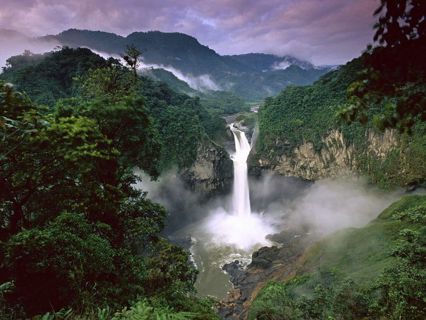
EXPLORING THE WONDERS OF RAINFORESTS.
Rainforests are Earth's lungs, purifiers of our planet's air, and veritable treasure troves of biodiversity. These lush and vibrant ecosystems cover just 6% of the Earth's surface, yet they harbor over 50% of the world's known plant and animal species. In this article, we embark on a journey deep into the heart of these remarkable rainforests to uncover the wonders that lie within their emerald canopies.
The Biodiversity Hotspot
One of the most astonishing aspects of rainforests is their unparalleled biodiversity. These lush environments are home to a staggering array of flora and fauna, many of which remain undiscovered by science. The Amazon Rainforest, for example, boasts an estimated 390 billion individual trees representing around 16,000 species.
Beyond the trees, countless species of mammals, birds, reptiles, and insects thrive in these ecosystems. Iconic creatures such as jaguars, toucans, and poison dart frogs call rainforests home, often hidden beneath layers of thick foliage. It's not just the variety of species, but the sheer numbers that boggle the mind.
A Canopy Wonderland
Rainforests are characterized by their multi-layered canopies. The forest floor, understory, canopy, and emergent layers create a complex and stratified environment where life thrives at every level. Some species are adapted to life in the dimly lit understory, while others find their niche high in the sun-drenched canopy.
The canopy itself is a world unto itself. With interconnected branches, lianas, and a profusion of epiphytes like orchids and ferns, the canopy teems with life. It's estimated that 80% of rainforest species inhabit the canopy. Some canopy-dwelling animals, like the remarkable tree-dwelling frogs, never descend to the ground throughout their lives.
Medicines from the Rainforest
Rainforests are often referred to as "nature's pharmacy" due to the plethora of medicinal plants they harbor. Indigenous peoples have known this for centuries, using rainforest plants to treat various ailments. Many modern pharmaceutical drugs, including painkillers and cancer treatments, have their origins in rainforest plants.
One of the most famous examples is the rosy periwinkle, a plant native to Madagascar. From it, scientists derived drugs that have significantly improved the survival rates of children with leukemia. This exemplifies the untapped potential of rainforest plants, and the urgent need for their conservation before more species and their potential benefits are lost forever.
Carbon Storage and Climate Regulation
Rainforests play a pivotal role in mitigating climate change. Their dense vegetation absorbs vast amounts of carbon dioxide, locking it away in the form of organic matter. This vital ecosystem service not only benefits local environments but also has a global impact. The Amazon Rainforest alone stores around 140 billion metric tons of carbon.
However, as rainforests face deforestation and degradation, this carbon reservoir is being released into the atmosphere, exacerbating climate change. Protecting rainforests is crucial in the fight against global warming.
The Threat of Deforestation
Despite their ecological significance, rainforests face relentless threats from human activities, primarily deforestation. The main drivers of deforestation include agriculture, logging, and infrastructure development. This destruction not only eradicates precious habitats but also releases stored carbon, accelerating climate change.
Indigenous communities, who often live harmoniously within rainforests, are also threatened by deforestation. Their ancestral lands are frequently encroached upon, leading to the loss of both cultural heritage and vital ecosystem stewards.
Conservation Efforts and Hope for the Future
Efforts to protect rainforests are ongoing. Conservation organizations, governments, and indigenous communities are working together to establish protected areas, promote sustainable logging practices, and educate the public about the importance of these ecosystems.
Eco-tourism is another avenue that offers hope for rainforest conservation. When managed sustainably, it can provide economic incentives for local communities to protect their natural heritage.
Conclusion
Rainforests are marvels of nature, brimming with life, potential cures, and vital ecosystem services. Yet, they are also under constant threat from human activities. As we continue to explore and appreciate the wonders of rainforests, we must also take action to ensure their preservation. The future of these incredible ecosystems, and the countless species that call them home, depends on our commitment to conservation and sustainable coexistence with the natural world.
Follow Sunday Moses to stay updated on their latest posts!
0 comments
Be the first to comment!
This post is waiting for your feedback.
Share your thoughts and join the conversation.
